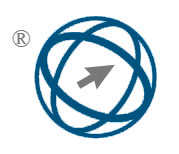Multi-Objective Optimization of Multi-Warehouse Cargo Allocation and Transportation Planning Using an Enhanced Ant Colony Algorithm
Abstract
With the rapid development of the global economy, the logistics industry, as a key support for economic activities, has become a focus of cost control. According to statistics, logistics costs have accounted for about 13% of the global GDP, among which multi-warehouse cargo allocation and transportation planning play a pivotal role in reducing logistics costs. Based on the improved ant colony algorithm, this paper carefully constructs a multi-warehouse cargo allocation and transportation planning model. With the help of a multi-level optimization framework, the model comprehensively considers multiple key objectives such as transportation cost, delivery time, and energy consumption. Based on the improved ant colony algorithm, this paper constructs a multiwarehouse cargo distribution and transportation planning model. Specifically, the pheromone update rule of the ant colony algorithm is changed by introducing an adaptive adjustment mechanism, which dynamically adjusts the pheromone volatilization and accumulation rate according to the current number of iterations and the change of the objective function. At the same time, the objective function weight is optimized to better balance multiple objectives such as transportation cost, delivery time and energy consumption. The multi-objective particle swarm optimization algorithm is used to assist in determining the weight, and the corresponding weight value is assigned according to the importance of different objectives. Compared with the traditional baseline methods such as genetic algorithm and particle swarm algorithm, in terms of transportation cost, the improved ant colony algorithm reduces the average cost by 25% in large-scale scenarios (20 warehouses), improves energy efficiency by 18%, and reduces the running time by 1.9 seconds in computing performance. In the multi-objective optimization of small-scale problems (5 warehouses) and a small number of objectives, the goal achievement rate is as high as 95%, the cost reduction rate can reach 20%, and the running time is 5.6 seconds for the ant colony algorithm in large-scale scenarios (20 warehouses), while the genetic algorithm is 7.5 seconds, which reflects relative stability. Based on the improved ant colony algorithm, in the optimization process of comprehensive consideration of multiple objectives such as transportation cost, delivery time and energy consumption, the algorithm is relatively stable in terms of running time compared with the genetic algorithm and the particle swarm algorithm.
Full Text:
PDFDOI: https://doi.org/10.31449/inf.v49i29.8439

This work is licensed under a Creative Commons Attribution 3.0 License.









